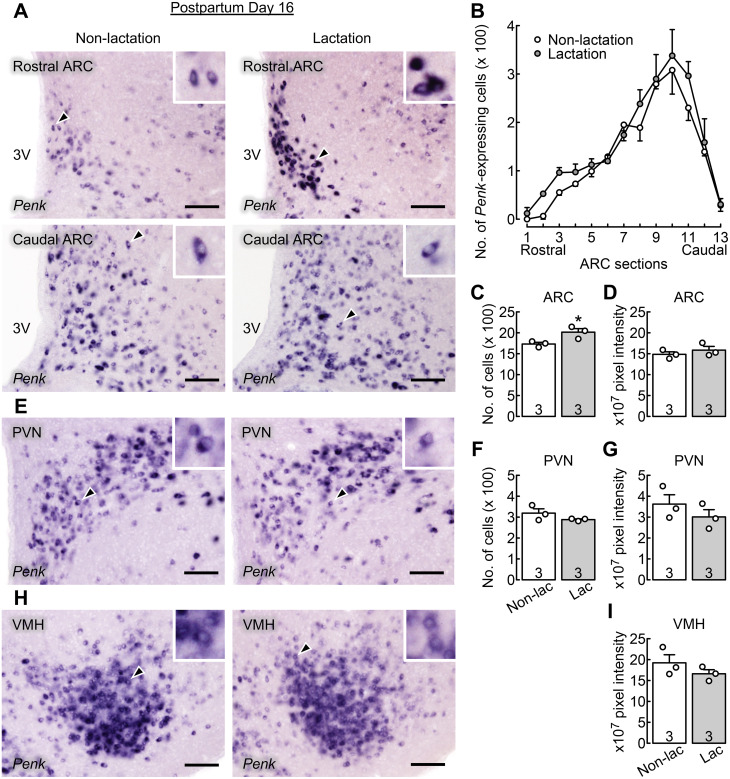Fig. 1.
Chronic suckling increased the number of Penk (enkephalin gene)-expressing cells in the arcuate nucleus (ARC) of estradiol-17β-treated ovariectomized (OVX + E2) lactating rats during late lactation. (A) Penk-expressing cells in the rostral (upper images) and caudal (lower images) parts of ARC of representative OVX + E2 lactating and non-lactating control rats. The insets indicate magnified images of Penk-expressing cells (arrowheads). 3V, third cerebroventricle. Scale bars, 100 µm. (B) Distribution of ARC Penk-expressing cells throughout the ARC (from the rostral to caudal region) of OVX + E2 lactating and non-lactating control rats. The x-axis represents brain sections 1 through 13 (corresponding to 1.72 to 4.36 mm [every 200 µm] posterior to the bregma). Many Penk-expressing cells were found throughout the ARC and abundantly localized in the caudal part of ARC in lactating and non-lactating rats. The number of Penk-expressing cells was higher in OVX + E2 lactating rats than in OVX + E2 non-lactating rats (P < 0.05, two-way repeated measures ANOVA). (C) The total number of Penk-expressing cells throughout the ARC was significantly higher in OVX + E2 lactating rats than in OVX + E2 non-lactating rats (*, P < 0.05, Student’s t-test). (D) The intensity of Penk mRNA signals in the ARC was comparable between groups. (E) Penk-expressing cells in the hypothalamic paraventricular nucleus (PVN) of representative OVX + E2 lactating and non-lactating control rats. The number of Penk-expressing cells (F) and the intensity of Penk mRNA signals (G) in the PVN were comparable between groups. (H) Penk-expressing cells in the hypothalamic ventromedial nucleus (VMH) of representative OVX + E2 lactating and non-lactating control rats. (I) The intensity of VMH Penk mRNA signals was comparable between groups. Values in charts are means ± SEMs. Open circles on the bar chart indicate the individual values. The number in each column indicates the number of animals used. Non-lac, non-lactation; Lac, lactation.

